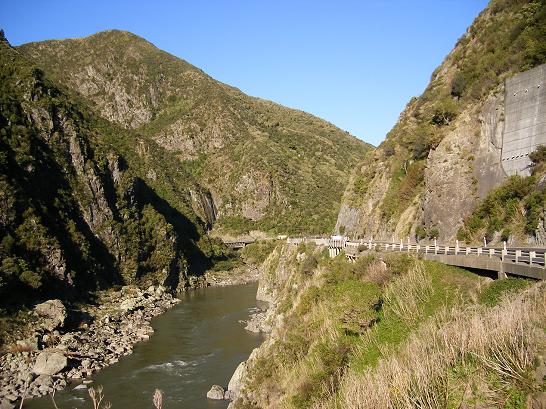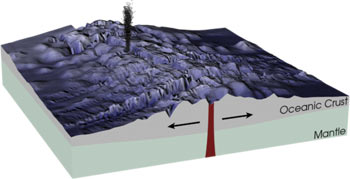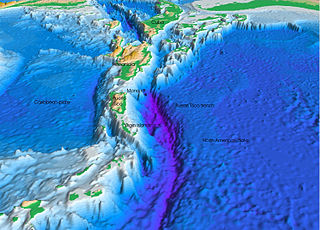|
Mainland |
Plain |
Country |
|
Great Chinese | ||
|
Eastern European |
RF, Ukraine, Belarus, Moldova. |
|
|
Deccan plateau | ||
|
Dzungarian lowland Fjords are found in high latitudes, near the poles, in places where the cold climate allows the presence of low-altitude glaciers. At the beginning of the erosion process river system flowed slowly over soft rocks scattered over vast plains. As a result of tectonic movements, the basal level changed: the plains rose or the basal water level was lowered, waterways collapsed, their speed accelerated under the influence of a steeper slope, and their flow was increased due to more abundant precipitation. sometimes erosion was favored by the presence of underground cavities located in the path of rivers. The traces of this long work are captured in the landscape in the form of stone arches connecting the two slopes of the gorge. | ||
|
West Siberian lowland | ||
|
Indo-Gangetic lowland |
India, Pakistan, Bangladesh |
|
|
Mesopotamian lowland |
Iraq, Iran, Syria, Kuwait. |
|
|
Caspian lowland |
RF, Kazakhstan When the stream reaches its equilibrium profile, it stops digging. The valley she helped create remains narrow due to the resistance of the slopes, which have uneven slopes. In hydro-oceanographic vocabulary, shallow water is a shallow water hazardous to environment... navigation. The presence of jambs can cause strong waves or swirls. These are also places where fishing is more rewarding. |
|
|
Central Siberian plateau | ||
|
Tarim (Kashgar) | ||
|
Turan lowland |
Uzbekistan, Kyrgyzstan, Tajikistan, Turkmenistan, Kazakhstan |
|
|
East African plateau |
Kenya, Uganda, Rwanda, The sudden collapse of a large part of their flank could trigger a tsunami. Seamounts often have impressive biodiversity. Several characteristics make them particularly welcoming. Shallower and made from a harder substrate, they provide habitat for marine species that cannot be found in the surrounding ocean floor. When these landforms are volcanoes or ancient volcanoes, hydrothermal ascent loaded with mineral salts can increase organic productivity. In addition to simply providing physical support to locally present species, this topography greatly alters deep or intermediate currents, creating turbulence and sometimes high flows of cold water rich in minerals from the depths at speeds reaching locally 0.9 knots. On the surface, seamounts also sometimes appear to be important or privileged sites for certain migratory animals such as marine mammals or even seabirds. on a high sea, when the relief is close to the sea surface. Below the surface, these mountains feed and feed higher concentrations of free and fixed animals. Fish such as tuna or some sharks seem to use them as milestones in their movements. At deep depths, at the feet and at the bottom of these mountains, abyssal fish come to reproduce. Burundi, Tanzania, Zambia, Malawi, Somalia, Djibouti, Eritrea, Ethiopia. |
|
|
South America |
Guiana highlands |
Venezuela, Brazil, Guyana, Suriname, Guiana |
|
Brazilian highlands |
Brazil |
|
|
Amazonian lowland They are often the site of intense volcanic activity. This country is, in fact, a chain of mountains that separates the Eurasian tectonic plate from the American plate. Oceanic trenches can be created in two ways: during the divergence of two oceanic plates at the level of the ridge, the pit is then an error in the convergence of the oceanic plate with the continental plate or other oceanic plate. The pit is then created by immersing one of the two plates under the other plate. This is a subduction pit. |
Brazil, Colombia, Ecuador, Peru |
|
|
North America |
Mississippi lowland | |
|
Atlantic lowland | ||
|
Pre-mexican lowland | ||
|
Great plains Perhaps relics of very ancient magic? As always, feel free to ask me your questions! From the cold arctic regions that characterize Alaska and northern Canada, before the tropical heat of North America, there is a region full of tourist attractions, climatic conditions that go from one extreme to the other, and landscapes that are completely different from them. The North American continent is characterized by a series of mountain ranges stretching almost to the border with Mexico: the most significant part of these orographic complexes are the Rocky Mountains, called the Rocky Mountains by the Americans, or more simply, the more simple "Rocky Mountains". The Alaskan Mountains consist of the Brooks Ridge and the Alaskan Ridge, where it touches the most high summit on the continent, namely the mountains. Moving to Canada, we find the coastal ridge, that is, the coastal chain and hills of the Canadian Shield, one of the oldest territories on Earth. |
USA, Canada |
|
|
Central plains |
USA, Canada |
Bottom relief world ocean
The following parts are distinguished in the bottom relief:
Shelf(continental shelf) - the underwater edge of the mainland, adjacent to the coast of the land. Shelf width up to 1500 km, depth from 50 - 100 to 200 m (2000 m South Kuril basin Sea of Okhotsk), makes up 8% of the area of the world ocean. The shelf is the most productive part of the world's oceans, where there are fishing areas (90% of seafood) and the largest deposits of minerals.
In the United States of America, the Rocky Mountains are adjacent to the Cascades Range, which consists of active volcanoes and the Sierra Nevada. Among these last mountains, the famous, 86 m below sea level, the largest depression opens.Finally, in the east, we find the ancient Appalachian chain, which in practice comes from Canada and Canada to the state of the United States, a series of forests and forests, ideal for those who wants to spend their vacation trekking at all. In Mexican territory, we find the Sierra Madre mountain dorsal, dotted with famous and imposing volcanoes.
Continental slope lies below the shelf boundary at a depth of up to 2000 m (sometimes up to 3600 m), accounting for 12% of the world's oceans. This part of the bottom is characterized by seismicity.
Bed of the world ocean is located at a depth of 2500 to 6000 m, occupies up to 80% of the area of the world ocean. The productivity of this part of the ocean is low. The bed has a difficult relief. Examples of these forms are:
Trip to North America associated with a wide variety of landscapes in mountainous areas but alternates with monotonous plains where the horizon never changes even after a few hours of driving. In addition, the shores vary greatly, with thousands of miles of ocean shores that are characterized by quite cold and unsuitable for swimming, but sometimes ideal for surfing and swimming in the southeastern United States, with magnificent beaches in Florida and Mexico, where we find one of the most important coral reef in the world, from the Yucatan Peninsula.
a) mid-oceanic ridges (Mid-Atlantic ridge, Central Indian with Arabian-Indian, Gakkel ridge), which arose as a result of the movement of lithospheric plates. The tops of the mid-oceanic ridges that come out to the surface form islands (Iceland, St. Helena, Easter);
b) deep-water trenches - narrow depressions with steep slopes (Table 6).
Despite the fact that the most suitable time for rest is usually summer, in autumn and spring it offers interesting trips to the most interesting prices with low seasonal rates. Winter is a cheap time of the year, but the continent's large expansion in latitude makes it ideal for those who dislike cold and snow.
High season: June-September and Christmas period. This is the best time if you exclude the Mexican coastal areas Caribbean exposed to tropical storms and hurricane hurricanes at this time. Christmas draws tourists to major American cities, primarily in the city, and then some big cities for skiing such as Canada and Vail in the US states, and good time to visit Mexico.
The ocean floor is covered with marine sediments, which cover 75% of the ocean floor and their thickness reaches 200 m.
Table 6
Deep sea trenches of the world's oceans
|
Gutter name |
Depth, m |
Ocean |
|
Mariana Low season: December-March. In the spring, when the climate presents the most important fluctuations between winter cascades and summer breakthroughs, activities under open air also include the so-called storm chase: especially in the United States, there are many tours for hunting thunderstorms and tornadoes, especially in the states of the great midwestern plains. In the spring, the rivers of rivers in the mountainous regions reach the largest streams, and some places such as Yosemite, Colorado, Yellowstone Parks and many others present their waterfalls at their most spectacular. | ||
|
Tonga (Oceania) | ||
|
Philippine | ||
|
Kermaden (Oceania) | ||
|
Izu-Ogasawara | ||
|
Kuril-Kamchatsky | ||
|
Puerto Rico Autumn is actually fantastic in Canada and the United States in the northeast, when the "foliage" season begins, the reddened leaves of fallen trees, with whole forests that merge with beautiful flowers and extraordinary charm. Thus, in Southwest America in winter, there is a more favorable climate for cities such as Los Angeles and San Francisco, which, for example, are severely affected by fog in summer season so much so that American writer Mark Twain has identified summer as the coldest winter of her entire life! The Danube plain is far from monotony and boredom, as many people think! Russensky Lom, which is located on the territory of the Ivanovo municipality, to convince you! Among the flat, like a desert area, the first low hills suddenly appear, dotted with groves, crops and pastures. And before adapting to the new species, it's a surprise! |
Atlantic |
|
|
Japanese | ||
|
South-Sandwich |
Atlantic |
|
|
Chilean | ||
|
Aleutian | ||
|
Sunda The earth seemed to suddenly fall tens of meters down at the foot of deep canyons riddled with targets with fuzzy niches and caves. You are above the rock formations before your eyes begin to blink the silver thread of the river and its tributaries Beli, Cherni and Mali Loma, which radiate from afar in enchantingly beautiful valleys. This unusual picture of our geographic latitudes will be found not elsewhere, but in Polomite. They call it another “mountain under the plain”. The windy valleys are home to incredible biodiversity. Today this picturesque piece of Bulgarian nature is still wild and unaffected by mass tourism - for the delight of bird watchers! You decide to take a walk in the surroundings, you will immerse yourself in the green embrace of thick deciduous forests and flowering meadows, among which are bright flowers of 16 orchids. All this natural wealth spread to the territory natural park Rusenski Lom. |
Indian |
|
|
Central American |
Processes influencing the formation crust.
The processes contributing to the formation of the relief are divided into:
external (exogenous) forces of attraction of the Moon and the Sun, the activity of flowing waters (fluvial processes), wind (aeolian processes), glacier activity (glacial processes), expressed in action. External processes can manifest themselves in the following:
The uncontrolled influx of tourists will seriously damage Polomi's fragile biological balance. The latter are well aware of the area as a biologically important site of European importance. There are more than 110 representatives of the feathered world in the Polomi breeds, many of which are endangered all over the world. The area is also full of butterflies, reptiles, including various types of snakes, as shown in the picture above. There are deer and wild boars everywhere, because the Bataklata wild farm is located near the natural park.
One of the local attractions is canoeing downstream of the river, starting at the foot of the medieval fortress Cherven, and after a series of peripheries and beautiful views leads to the square of the Ivanovsky rock-monasteries. A touch of eternity is an area near the village of Nisovo, hidden in the valley of the Tisna River leading to the large Nisovo Rock Monastery. In the vicinity there is an old cemetery with mysterious stone crosses, also known as the Templar cemetery.
mudflow - a stream of water, mud, stones, merged into a viscous single mass;
landslides - displaced masses of loose rocks sliding under the influence of gravity;
landslides - the collapse of large blocks and slopes of mountain systems;
avalanches - masses of snow falling from mountain slopes;
weathering is the process of destruction and chemical alteration of rocks.
External processes form small landforms (for example, ravines).
Such forms of relief as shields, "sheep's foreheads" (low cliffs in the Polar Urals), moraine hills, sandy plains - zandras, troughs, were formed during the movement of the glacier. About a million years ago, a noticeable cooling of the climate occurred on the globe. The last ice age of the Earth by the English naturalist Charles Layol in 1832 was called Pleistocene. This glaciation covered North America and Eurasia (Scandinavian Mountains, Polar Urals, Canadian Arctic Archipelago).
internal (endogenous) ones raise separate areas of the earth's crust and form large landforms (mountains).
The main sources of these processes are internal heat in the bowels of the Earth, which causes the movement of magma, volcanic activity, and earthquakes.
Self-check tests:
Exogenous processes include:
Weathering
Volcanism
Earthquake
Glacier activity
2. Determine the mountain range within which the peak with the highest absolute height is located:
Pyrenees 2. Andes 3. Cordilleras 4. Alps
3. In one era of folding formed:
Cordillera and Pyrenees 2. Atlas and Sikhote-Alin
3. Andes and Scandinavian mountains 4. Altai and the Great Dividing Range
4. Plains with absolute heights of more than 500 m are called:
highlands 2) lowlands 3) hills 4) depressions.
5. The Philippine Trench is an element:
young platform
geosynclinal zone
mid ocean ridge
the central part of the oceanic basin
6. Are the following statements correct (yes, no):
in the central parts of the oceanic basins, sedimentation is slower than near the continents
volcanic eruptions can occur both on land and at the bottom of the oceans
The Antarctic Peninsula was formed in the Ordovician.
7. The longest mountains ___________________________________
8. The highest peak of Antarctica ____________________________
9. Highest heights and the degree of dissection of the relief is characteristic:
Central Siberian plateau
The East European Plain
West Siberian Plain
Amazonian lowland
10. Find a logical connection between the listed pairs and insert the missing:
Middle Russian Upland - Precambrian;
Ural - Paleozoic;
Verkhoyansk ridge - Mesozoic;
The middle ridge of Kamchatka is the Cenozoic;
Siberian Uvaly - _________________.
11. Moraine hills and ridges were formed as a result of geological activity ...
flowing waters
12. On all continents, with the exception of Antarctica, there are landforms created by geological activity ...
permafrost and flowing waters
flowing water and wind
wind and glaciers
glaciers and permafrost
13.In South America east of the Andes are dominated by
high and medium-altitude mountains
lowlands and plateaus
lowlands and highlands
low and medium-altitude mountains
14. By the general features of their relief, they are most similar ...
Africa and South America
South America and North America
North America and Australia
Australia and Eurasia
Plains and mountains are the main forms the earth's surface... They were formed as a result of geological processes that have shaped the face of the Earth throughout geological history. Plains are vast areas with calm, flat or hilly relief and relatively small fluctuations in relative heights (no more than 200 m).
Plains are subdivided by absolute height. Plains with an absolute height of no more than 200 m are called lowlands, or lowlands (West Siberian). Plains, absolute height which are from 200 to 500 m, are called elevated, or heights (East European, or Russian). Plains, the height of which is over 500 m above sea level, are called high, or plateaus (Central Siberian).
Highlands and hills, in comparison with lowlands, due to their considerable height, usually have a more dissected surface and rugged relief. Elevated plains with a flat surface are called plateaus.
Most large lowlands: Amazonian, Mississippian, Indo-Gangetic, German-Polish. represents an alternation of lowlands (Pridneprovskaya, Prichernomorskaya, Prikaspiyskaya, etc.) and uplands (Valdai, Central Russian, Volyno-Podolskaya, Privolzhskaya, etc.). Highlands are most widespread in Asia (Central Siberian, Arabian, Deccan, etc.), in (East African, South African, etc.), in (West Australian).
Plains are also subdivided by origin. On the continents, most (64%) of the plains formed on platforms; they are folded in layers of a sedimentary cover. Such plains are called stratal or platform plains. The Caspian lowland is the youngest plain, and are ancient platform plains, their surface is largely altered by flowing waters and other external processes.
Plains that have arisen as a result of the removal of the products of destruction of mountains (denudation) from the destroyed base of the mountains (basement) are called denudation, or basement, plains. The destruction of mountains and transport usually occurs under the influence of water, ice and gravity. Gradually Mountain country smoothed, leveled, turning into a hilly plain. Denudation plains are usually composed of hard rocks (hummocks).
The main lowlands and plateaus of the parts of the world
| Lowlands | Plateau |
|---|---|
| German-Polish London pool The Parisian Basin Middle Danube Lower Danube |
Norland Manselka (ridge) Maladeta |
| Mesopotamian Great Plain of China Coromandel coast Malabar Coast Indo-Gangetic |
Anatolian Changbai |
| Mississippi Primo Mexican Atlantic Mosquito Beach |
Great plains Central plains Yukon (plateau) |
| Amazonian (Selvas) Orinokskaya (Llanos) La Platskaya |
Patagonian |
| Central (Great Artesian Basin) Carpentaria |








